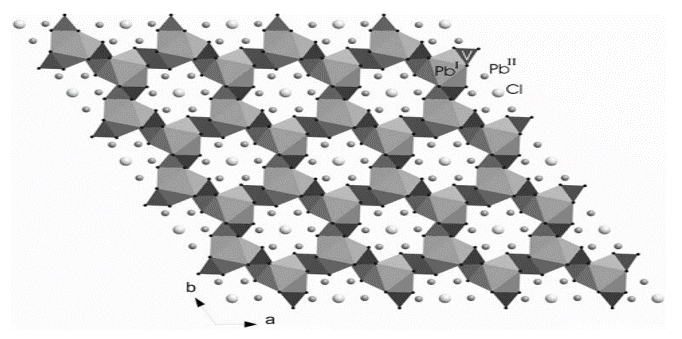“Elastic behavior of vanadinite, Pb10(VO4)6Cl2, a microporous non-zeolitic mineral”
- Authors
G. D. Gatta, Y. Lee, C.-C. Kao
- Journal
Physics and Chemistry of Minerals
Vol.36, pp.311-317, 2009.06 - DOI
Abstract
The high-pressure behavior of a vanadinite (Pb10(VO4)6Cl2, a = b = 10.3254(5), c = 7.3450(4) Å, space group P63/m), a natural microporous mineral, has been investigated using in-situ HP-synchrotron X-ray powder diffraction up to 7.67 GPa with a diamond anvil cell under hydrostatic conditions. No phase transition has been observed within the pressure range investigated. Axial and volume isothermal Equations of State (EoS) of vanadinite were determined. Fitting the P–V data with a third-order Birch-Murnaghan (BM) EoS, using the data weighted by the uncertainties in P and V, we obtained: V 0 = 681(1) Å3, K 0 = 41(5) GPa, and K′ = 12.5(2.5). The evolution of the lattice constants with P shows a strong anisotropic compression pattern. The axial bulk moduli were calculated with a third-order “linearized” BM-EoS. The EoS parameters are: a 0 = 10.3302(2) Å, K 0(a) = 35(2) GPa and K′(a) = 10(1) for the a-axis; c 0 = 7.3520(3) Å, K 0(c) = 98(4) GPa, and K′(c) = 9(2) for the c-axis (K 0(a):K 0(c) = 1:2.80). Axial and volume Eulerian-finite strain (fe) at different normalized stress (Fe) were calculated. The weighted linear regression through the data points yields the following intercept values: Fe a (0) = 35(2) GPa for the a-axis, Fe c (0) = 98(4) GPa for the c-axis and Fe V (0) = 45(2) GPa for the unit-cell volume. The slope of the regression lines gives rise to K′ values of 10(1) for the a-axis, 9(2) for the c-axis and 11(1) for the unit cell-volume. A comparison between the HP-elastic response of vanadinite and the iso-structural apatite is carried out. The possible reasons of the elastic anisotropy are discussed.












